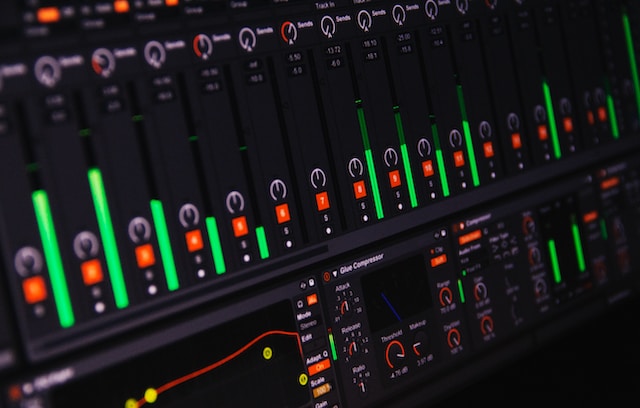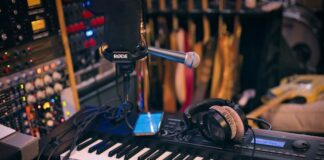As the music industry continues to evolve, recording audio has become one of the most crucial aspects of music production. The art of recording audio has revolutionized how music is created, and with the advancement of technology, music producers and artists can now achieve the best possible sound quality. In this article, we will delve into the world of music production and explore the art of recording audio.
What is Music Production?
Music production is the process of creating a musical recording. It involves several stages, including composition, recording, mixing, and mastering. The goal of music production is to create a high-quality recording that sounds great on any platform.
Recording Audio: The Basics
Recording audio is the process of capturing sound using a microphone and converting it into a digital signal that can be stored on a computer or other digital device. The process involves several steps, including:
Step 1: Setting up the Studio
Setting up the studio is the first and most crucial step in recording audio. The studio should be acoustically treated to reduce unwanted sound reflections and echoes. The equipment should be arranged in a way that allows for easy access to all necessary items.
Step 2: Choosing the Right Microphone
Choosing the right microphone is essential in recording audio. Microphones come in different shapes, sizes, and polar patterns, and each type is designed for a specific purpose. It is essential to choose a microphone that is suitable for the intended sound source.
Step 3: Positioning the Microphone
The microphone’s position is critical in capturing the desired sound quality. The position of the microphone should be adjusted to get the best possible sound from the sound source.
Step 4: Setting the Recording Levels
Setting the recording levels is essential in capturing a high-quality recording. The levels should be set to ensure that the sound is not distorted or clipped.
Step 5: Monitoring the Recording
Monitoring the recording is crucial in ensuring that the recording is of high quality. It is essential to use headphones to monitor the recording and adjust the levels accordingly.
Advanced Recording Techniques
Recording audio is not only about capturing the sound source but also about creating a unique sound. Music producers and artists use advanced recording techniques to create a distinctive sound that sets them apart. Here are some of the advanced recording techniques used in music production:
Overdubbing
Overdubbing is the process of recording additional tracks over an existing track. This technique is commonly used in music production to create harmonies or add extra instruments.
Double Tracking
Double tracking is the process of recording a part twice and then panning each recording to opposite sides of the stereo field. This technique creates a fuller and wider sound.
Compression
Compression is the process of reducing the dynamic range of a recording. This technique is used to even out the sound and make it easier to mix.
EQ
EQ or equalization is the process of adjusting the frequency balance of a recording. This technique is used to enhance or reduce specific frequencies in the sound.
Mixing and Mastering
Mixing and mastering are the final stages in music production. Mixing is the process of combining multiple tracks into a single stereo track. It involves adjusting the volume, panning, and EQ of each track to create a cohesive sound. Mastering is the final stage of music production, and it involves preparing the final mix for distribution. It includes adjusting the overall volume, EQ, and compression to make the recording sound great on any platform.
FAQs
1. What is the difference between mixing and mastering?
Mixing is the process of combining multiple tracks into a single stereo track, while mastering is the final stage of music production, preparing the final mix for distribution.
2. What is the best microphone for recording?
The best microphone for recording depends on the intended sound source. Dynamic microphones are great for recording loud sounds, such as drums and electric guitars, while condenser microphones are ideal for recording vocals and acoustic instruments.
3. Can I record audio without a studio?
Yes, you can record audio without a studio. However, it is important to find a suitable location with good acoustics and use appropriate equipment.
4. What is compression in recording?
Compression is the process of reducing the dynamic range of a recording. It is used to even out the sound and make it easier to mix.
5. Can I mix and master my own music?
Yes, you can mix and master your own music. However, it is important to have a good understanding of the process and use appropriate equipment.
Conclusion
Recording audio is an essential aspect of music production, and with the right equipment and techniques, music producers and artists can achieve high-quality recordings that stand out. By following the basics of recording audio, using advanced recording techniques, and mastering the final mix, music production can become a rewarding and enjoyable experience. Whether you are a professional music producer or just starting, the art of recording audio is an essential skill to learn.
We hope this article has given you some valuable insights into the art of recording audio in music production. If you have any questions or comments, feel free to leave them below, and don’t forget to share this article on social media to help others learn more about music production.
Source: http://www.mccabestavern.com/









